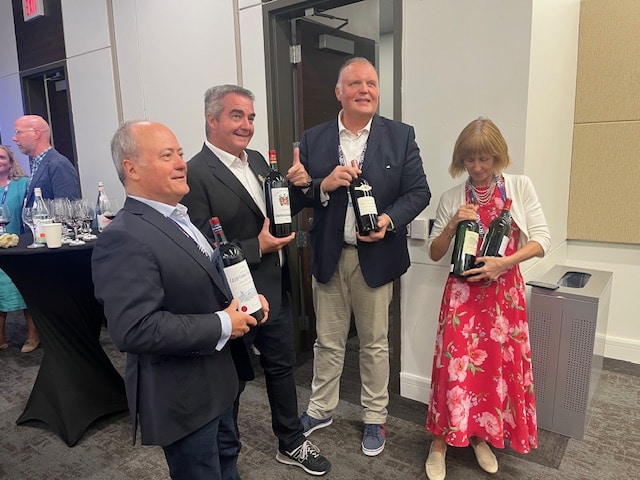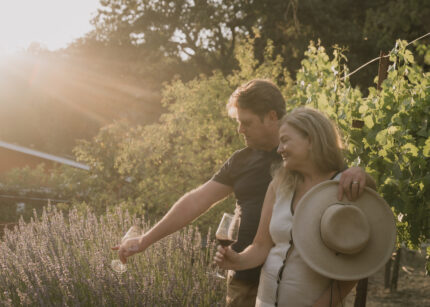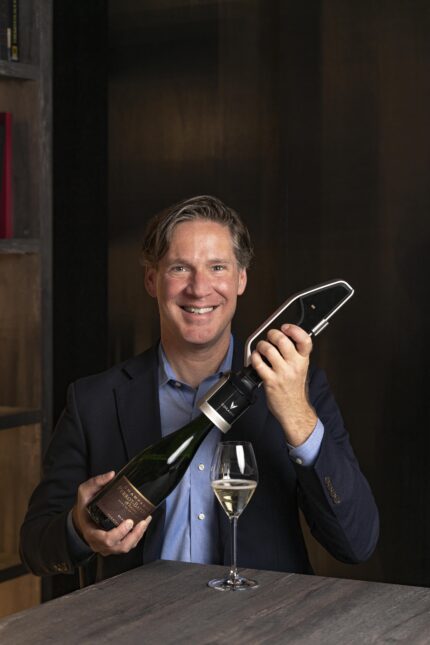If you want to see Bordeaux at its most soulful, you head to the Right Bank. Here among the rolling plateau, hidden slopes, and winding riverbanks, you’ll taste 2,000 years of wine tradition in every glass and meet winemakers whose vision is firmly forward. At a recent TEXSOM dinner, I had the chance to explore this world. Thanks to the stories and bottles shared by three remarkable ambassadors: François Despagne (Château Grand Corbin Despagne), François Estager (Château La Cabanne), and Nicolas Réblé (Maison Galhaud & Scodex Wines), along with Mary Gorman-McAdams MW, who hosted us.
The Lay of the Land: Saint-Émilion, Pomerol, and More
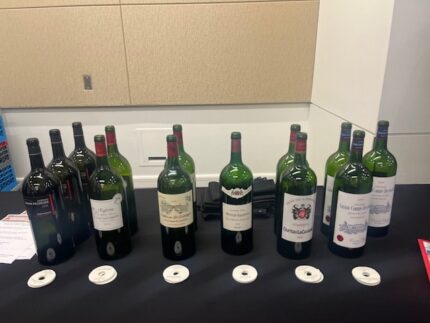
Let’s start with the geography lesson. The “Right Bank” refers to everything on the right (north) side of Bordeaux’s Dordogne and Gironde Rivers. This is Merlot territory, with wines that invite you in with a smile. Clay and limestone soils dominate, helping Merlot ripen fully and adapt to temperature swings, resulting in wines with density and a smooth texture.
While Left Bank Bordeaux relies on Cabernet Sauvignon, the Right Bank maintains an elegant and accessible style using primarily Merlot. Many bottles drink beautifully young but still reward cellaring. Of the region’s 1500+ winegrowers, most are family-owned and farm small estates—meaning these reds tell the story of generations, not corporations.
Château Grand Corbin Despagne: Seven Generations and Counting
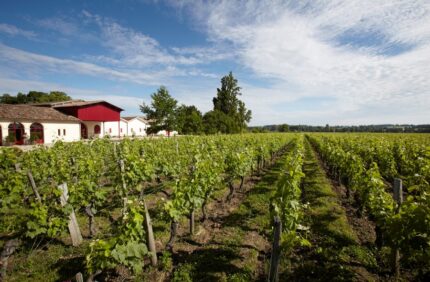
Some estates feel like living history. Château Grand Corbin Despagne is one of those places. The Despagne family has shaped Saint-Émilion’s landscape since the 16th century, and today, François Despagne is the seventh-generation family member. Their 29 hectares spread over clay and sandy soils, border the legendary vineyards of Pomerol — are planted primarily to Merlot (75%), with the rest Cabernet Franc and a bit of Cabernet Sauvignon.
But tradition here doesn’t mean stuck in the past. The estate is a Grand Cru Classé that is fully organic and is transitioning to biodynamic. Their classical approach is about harmony and finesse: wines are never overdone. Instead, expect a red fruit, floral notes, and minerality. We also had a chance to taste their second label – the Petit Corbin-Despagne.
Château La Cabanne: Tradition Rebuilt and a New Chapter for Pomerol
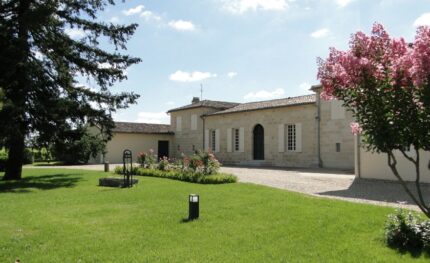
Pomerol needs little introduction to those who love Bordeaux, but what makes Château La Cabanne stand out is its resilience. After a devastating fire in 2010, François Estager rebuilt the historic 18th-century estate, determined not just to restore it, but to elevate it. Now fully organic, the property’s eight hectares sit on the famed Le Plateau Argileux—blue clay and gravel soils that infuse the Merlot (94%, plus 6% Cab Franc) with signature depth, richness, and aging power.
Estager produces just 2,500 cases a year, nurturing vines that average 30 to 40 years.
Maison Galhaud & Scodex Wines: The Right Bank Goes Global
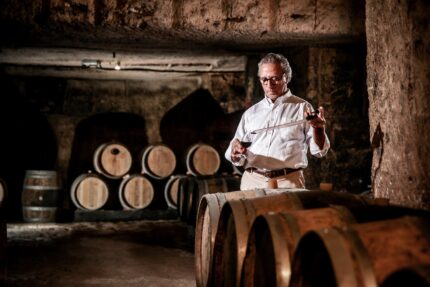
As Bordeaux’s trade and export landscape evolves, Scodex champions innovation alongside tradition. These are “classic” Pomerol wines: structured, precise, deliciously drinkable now but destined for greatness with time in the cellar. Nicolas Réblé of Maison Galhaud, anchored in Saint-Émilion for over a century, crafts terroir-driven wines while Scodex —helmed by Jean-François Galhaud and Nicolas—takes these bottles to tables across the globe.
The Element that Ties the Producers Together
Respect for their deep roots, matched with the agility to meet changing tastes and climates. Sustainability is more than a buzzword—think organic and biodynamic farming, reforestation, building biodiversity with bat houses and wildflowers, even collaborative hail prevention.
The Wines We Tried
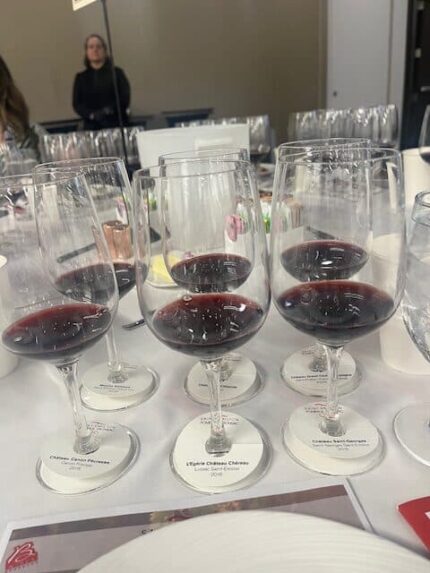
2018 Château Canon Pécresse Canon Fronsac
I tasted notes of plum, black cherry, and hints of violets on the nose along with graphite mineralty. It was a great introduction to Canon Fronsac, which is often overshadowed by Pomerol and Saint-Émilion.
2016 Château Chéreau Lussac Saint-Émilion ‘L’Egérie’
This is a selection of the best lots from the Silvestrini family’s estate. Notes of red and black fruit, Asian spice, and mocha. The wine is vibrant, with just enough tannin for structure, and plenty of freshness that invites another sip. The wine delivers value and a great experience.
2015 Château Saint-Georges Saint George-Saint-Émilion
A blend mostly of Merlot with splashes of Cabernet Sauvignon and Cabernet Franc, this red reveals notes of black cherry, cassis, cedar, and tobacco on the nose. It’s a serious wine with some staying power
2008 Moulin Galhaud Saint-Émilion Grand Cru
Mostly made of merlot, I tasted notes of cherries, plum, leather, forest floor, tobacco, mushroom, and a hint of cedar. It was plush, savory and still had the fruit. I loved seeing the aging potential.
2010 Château La Cabanne Pomerol
This is Pomerol at its best—sensual, layered, and decadent. I tasted black raspberry, truffle, dark chocolate, and fresh violets. You can taste the complexity from the blue clay soils.
2009 Château Grand Corbin-Despagne Saint-Émilion Grand Cru Classé
With its mix of Merlot and 24% Cabernet Franc (plus a touch of Cabernet Sauvignon), this wine tastes of cherry, plum preserves, violets, cocoa, and spice. The sandy soils and the dedication to farming organically and biodynamically makes for a great wine that is plush and elegant again showing the power of age.
Reflections
What stood out tasting through these wines was the sheer diversity and personality of the Right Bank—the finesse of Saint-Émilion, the aged grandeur of Grand Cru, Canon Fronsac’s surprising freshness, and Pomerol’s legendary lushness. These are stories in a glass, shaped by families, microclimates, and centuries of stewardship. As climate, innovation, and new generations shape what’s next, these regions prove they know how to honor tradition while still taking risks.
